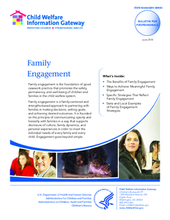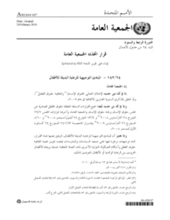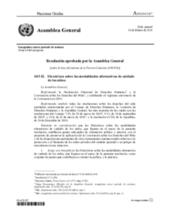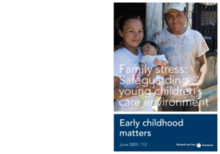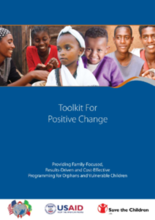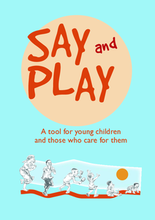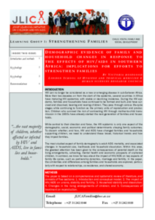Displaying 81 - 90 of 112
Family engagement is the foundation of good casework practice that promotes the safety, permanency, and well-being of children and families in the US child welfare system. This brief offers information to help State child welfare managers improve family engagement across program areas.
The Guidelines for the Alternative Care of Children were endorsed by the United Nations General Assembly on 20th November 2009, in connection with the 20th anniversary of the UN Convention on the Rights of the Child.
The Guidelines for the Alternative Care of Children were endorsed by the United Nations General Assembly on 20th November 2009, in connection with the 20th anniversary of the UN Convention on the Rights of the Child. This momentous day marked a culmination of years of discussions and negotiations led by the Government of Brazil, in partnership with Group of Friends and civil society.
Las directrices sobre las modalidades alternativas de cuidado de los niños fueron endosados por la Asamblea General de las Naciones Unidas el 20 de noviembre de 2009, en conexión con el 20a aniversario de la Convención de los Derechos del Niño de la ONU.
The present volume contains the resolutions adopted by the General Assembly from 15 September to 24 December 2009, including the Guidelines for the Alternative Care of Children on page 376.
Examines the most effective ways of dealing with and diminishing parental stress, and what are the factors that contribute to children’s resilience and coping mechanisms in challenging care environments in particular contexts
This paper outlines a vision for the network of services, policies, and programmes necessary to protect children at risk and enable them to reach their full potential, free from violence, exploitation, and abuse.
Documents the strategies of The Positive Change: Children, Communities and Care (PC3) Program - a five-year (2004-2009) integrated and comprehensive program designed to provide care and support to more than half a million orphaned and vulnerable children and their families throughout the country of Ethiopia.
Say and Play is an interactive tool designed for orphans and vulnerable children from three to six years old and those who care for them. It uses pictures, stories and games to help children talk about their lives and, through these activities, it guides adults to identify and support the emotional and social needs of children.
Assessment on the impact of HIV/AIDS on key aspects of family life cycles

